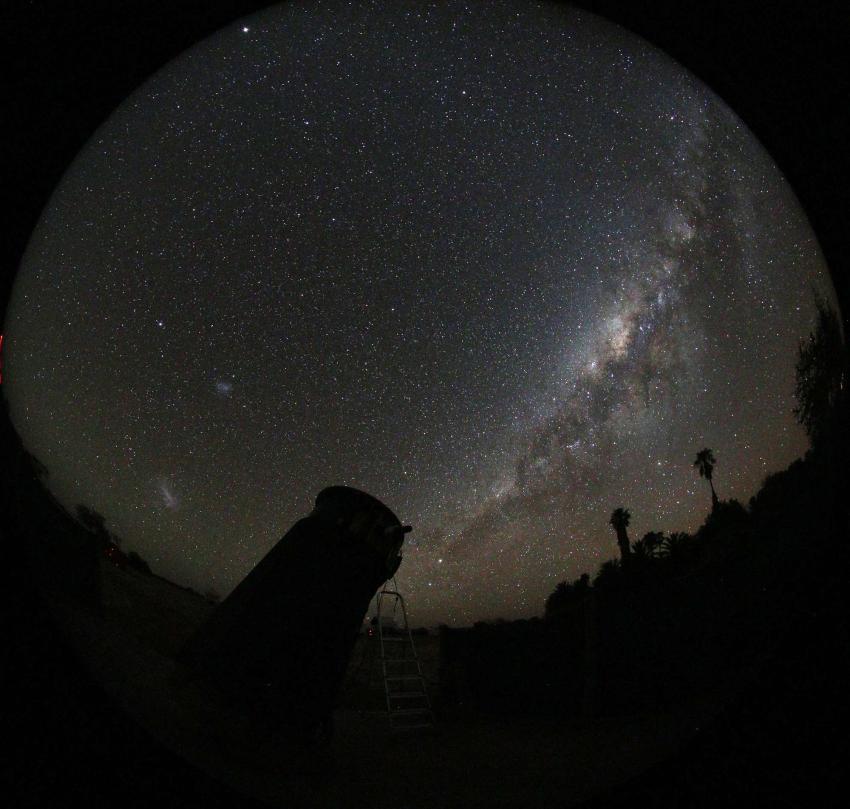In a recent study published in the Monthly Notices of the Royal Astronomical Society, an international team of researchers examined the levels of light pollution at astronomical observatories from around the world to better understand how artificial light is impacting night sky observations in hopes of taking steps to reduce it. But how important is it to preserve the scientific productivity of astronomical observatories from the dangers of light pollution, as noted in the study’s opening statement?
“It is extremely important,” said Fabio Falchi, who has studied light pollution for the last 25 years, is a PhD student at the University of Santiago de Compostela in Spain, and lead author of the study. “We all know the huge costs of sending telescopes to space. It requires decades and tens of billions of dollars (e.g. JWST), while the biggest planned new Earth-based telescope will cost about one billion euros [one billion dollars]. Moreover, light pollution is affecting all the smaller telescopes of the universities around the world, making it harder and harder for students to do research. Another effect of light pollution is that it is subtracting a source of inspiration, the uncontaminated starry sky, for new generations to go for a scientific career.”
For the study, the researchers examined over 50 observatories around the world with a focus on 28 observatories hosting telescope apertures greater than 3 meters (9.8 feet), with the aperture being the size of the light-collecting area of a telescope. They used several indicators to measure the level of light pollution at each of the sites. One of these indicators is the artificial radiance limit (aka artificial brightness) with limits of 1% and 10%, the latter of which is a more relaxed limit previously established by the International Astronomical Union in the 1970s.
The study’s findings indicate that 7 out of 28—or 25%—of the major observatories exhibited light pollution that fell within 1% of the artificial radiance limit. In contrast, the researchers discovered that 21 out of 28—or 75%–of the major observatories exhibited light pollution levels above 1% of the artificial radiance limit. The researchers also discovered that 10 out of 28—or just over 35%–of the major observatories exhibited light pollution that fell within 10% of the limit, while 18 out of 28—or just over 64%– of the major observatories exhibited light pollution levels above 10% of the limit. Given these numbers, how much more serious will light pollution become in the coming years?
“This would require a long discussion,” explains Falchi. “Life on Earth evolved with the daily alternance between bright light during the day and dark during the night. Most animals’ behavior (foraging, mating, hunting, migrating,…) depend on the presence or not of light. Changing this by subtracting the dark is causing biodiversity loss. Also, physiology of animals, humans included of course, can be affected by the disruption of the circadian rhythms due to exposure to artificial light during the night, reducing or stopping the production of melatonin.”
The researchers note their calculations don’t account for the additional artificial light caused by the “ever-increasing number of satellites and space debris in low Earth orbit”, which they note has already contributed to an increased brightness of 10% occurring some time throughout the astronomical night.
“The problem is not only the traditional light pollution from below, but also the light pollution from above, coming from the mega constellations of satellites, launched for the interest of few corporations that are going to destroy the night sky for all humanity,” concludes Falchi.
While the private space company, SpaceX, and the National Science Foundation recently reached an agreement to reduce the effects of the SpaceX’s Starlink constellation of satellites on astronomy, this study nonetheless demonstrates the effects from light pollution on astronomy have already been measured.
Can we save the night sky from the perils of light pollution? Only time will tell, and this is why we science!
As always, keep doing science & keep looking up!

